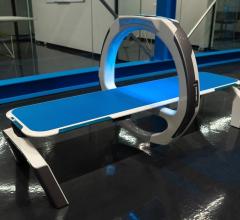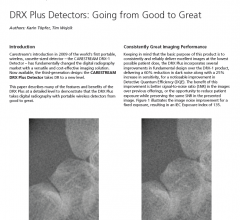
November 12, 2008 - The DX-S offline computed radiography (CR) system by Agfa HealthCare delivers high quality diagnostic exposures with significantly reduced patient exposure dose compared to the performance of a 400-speed class screen/film system, according to a study by the University Clinical Center of Giessen and Marburg in Germany.
Researchers evaluated the dose and quality performance of Agfa HealthCare’s DX-S system, compared to the performance of a 400-speed class screen/film system in a study that involved 200 thoracic exposures from children[1]. The second study, by the Friedrich Schiller University in Jena, Germany, covered larger children and adolescents and exposures using a chest phantom[2]. The results were evaluated by five investigators. Both studies concluded that, with Agfa HealthCare’s DX-S system, the dose could be reduced by up to 50 percent, without reducing the diagnostic quality.
The DX-S system includes DirectriX needle-based detector technology, that is said to offer increased image quality and potential for X-ray patient dose reduction, plus Scanhead technology for reduced waiting times. Agfa is positioning the DX-S as an alternative to DR (direct radiography), claiming it provides the flexibility and economical advantages of CR with the quality of DR.
[1] For more detailed information on this study, refer to: G. Alzen, K. Beiderwellen, M. Volz, M. Fiebich, Vergleichende Beurteilung von Dosis und Bildqualität eines konventionellen 400er Film-Folien-Systems mit einem digitalen Speicherfoliensystem an Hand von Thoraxaufnahmen im Kindesalter
[2] For more detailed information on this study, refer to: J.-P. Heyne, H.-J. Mentzel, R. Neumann, E. Lopatta, U. Zimmermann, W. A. Kaiser, Phantomuntersuchung zur Strahlendosisreduktion mittels neuer, auf Nadelstruktur basierender Speicherfolienradiografie und Zusatzfilterung in der Thoraxradiografie bei Jugendlichen und gröberen Kindern
For more information: www.agfa.com/healthcare


 December 03, 2020
December 03, 2020 









